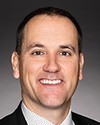Thank you.
With regard to just using the term “cage fighting”, I think that's a loaded term. Mixed martial arts occurs in a ring as well. The connotation of cage fighting brings with it something distasteful, perhaps, so I prefer the term mixed martial arts.
With regard to harm reduction, I divide it into pre, during, and post in terms of the medical assessments that occur, the referees, and sanctioning.
First and foremost, before the fight, before the competition, it's important to assess the weight classes to ensure that it is an equal competition of skill, not unmatched. In the professional ranks, matchmaking is a crucial portion of protecting the athletes. If a very highly skilled competitor goes against an amateur, the risk to the amateur, or a new amateur, is substantial. So matchmaking is important.
Physical assessments in terms of capability to compete at that level, cardiovascular fitness, vision testing, CT scanning, electroencephalograms, plus or minus cognitive testing using some of the validated concussion assessment tools—some of these things are currently in play and some of them should be in play. I would suggest that opening this debate up further to the medical community and engaging as opposed to banning would enable some of these pre-competition metrics to go into force.
During the competition, the safety of the athlete is wholly dependent on the skill, experience, and training of the referee. The referee is the one who will stop that second, third, fourth blow that you referred to. Yes, by rules, they can continue to strike until the opponent is unable to protect themselves, which is a judgment call by the referee. Therefore, higher-skill-level referees, more training, protect the athletes further.
After the competition, assessment by an experienced physician who has the capacity to make an assessment using a standardized scale and then apply a prohibition to competition for 30, 60, 90 days or more, subject to additional conditions such as assessment by neurologists and the like, occurs in the professional ranks, where there's appropriate sanctioning, versus underground.
I have one example here from the Lower Mainland. One competitor was in a professional fight in one location. The next night they competed in another location. That is completely unacceptable in any rank. However, there is no governing body. There is no ability to prohibit that in many of these competitions.
That's where people are getting harmed. That's where the second-impact syndrome, as it's referred to, causes extensive damage after a brain has been injured. That's what we're trying to avoid. By bringing this out of the shadows further, we can protect combatants more.






